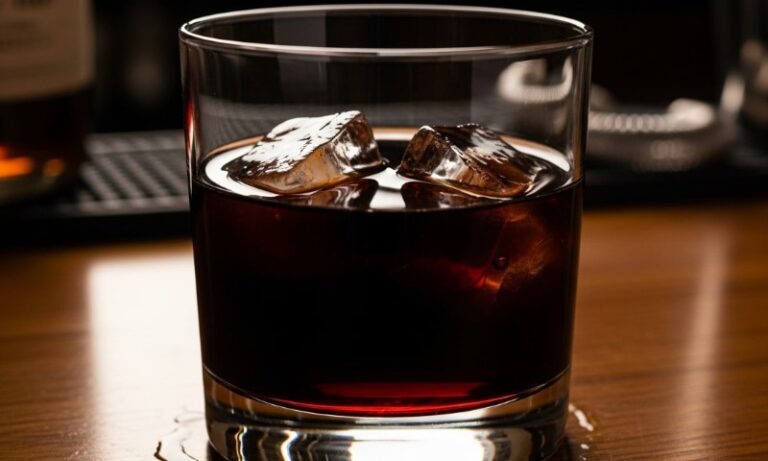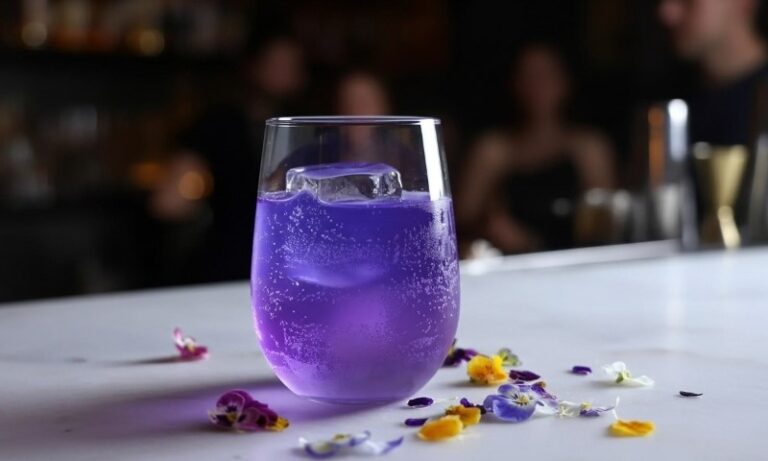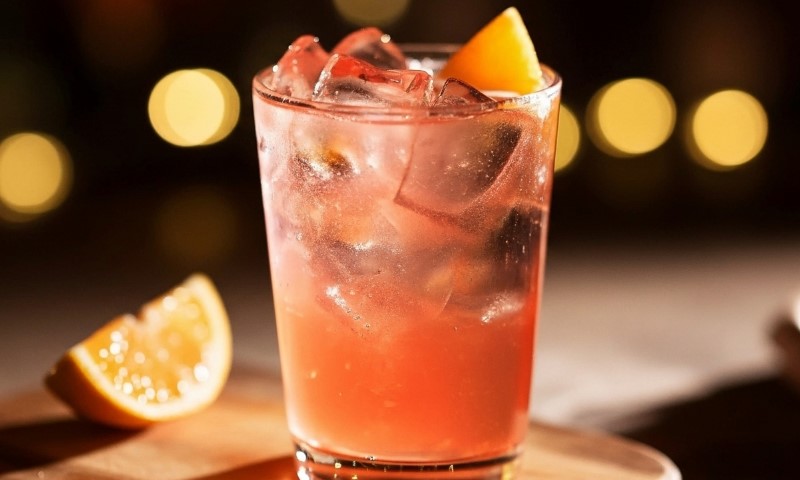There’s a particular kind of magic in cocktails that look like a dare on paper but somehow end up being perfectly balanced in the glass. The Salmoncito is one of those magic tricks: a pink, bittersweet, grapefruit-bright drink that by all logic shouldn’t be as drinkable as it is. Yet in Mexico City’s cocktail circles, it’s become a small legend.
Equal parts curiosity and refreshment, the Salmoncito found its footing as an accidental modern classic. A drink that traveled from a neighborhood bar menu to cocktail books, bartender playlists, and home kitchens around the world.
Let’s take a proper look at how something that reads like an experiment, gin, Campari, grapefruit, and tonic , ended up defining a new kind of Mexican aperitivo.
Table of Contents
ToggleWhat Exactly Is a Salmoncito?
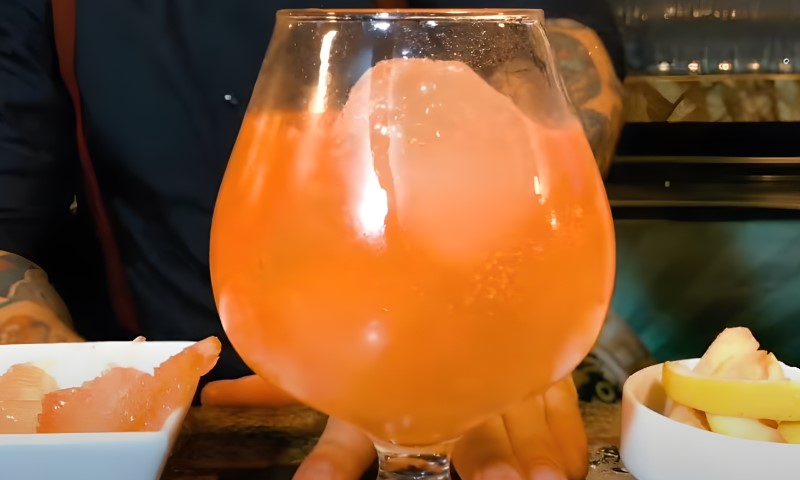
At its simplest, the Salmoncito is a tall, sparkling pink highball built directly in the glass. It sits somewhere between a Gin & Tonic and a light Negroni: bright, bitter, bubbly, and incredibly easy to drink.
Core Build
| Ingredient | Measurement | Role |
|---|---|---|
| London Dry Gin | 1½ oz | Structure and botanical backbone |
| Campari | ¼ to ⅓ oz | Bittersweet depth and color |
| Fresh Pink or Ruby Grapefruit Juice | ¼ to ⅓ oz | Citrus brightness and aroma |
| Chilled Tonic Water | 3½ to 4½ oz | Carbonation, sweetness, and balance |
The preparation is charmingly unfussy:
- Fill a chilled highball or copa glass with clear ice.
- Add gin, Campari, and grapefruit juice.
- Top with tonic water.
- Give a single, slow stir .
- Express the grapefruit twist over the top and discard it.
- Drop in a small wedge of supremed grapefruit .
The result: a soft pink, citrus-perfumed drink that delivers crisp bitterness followed by a clean, refreshing finish. The name Salmoncito , or “little salmon,” comes from that unmistakable hue.
Why It “Shouldn’t” Work, and Why It Does
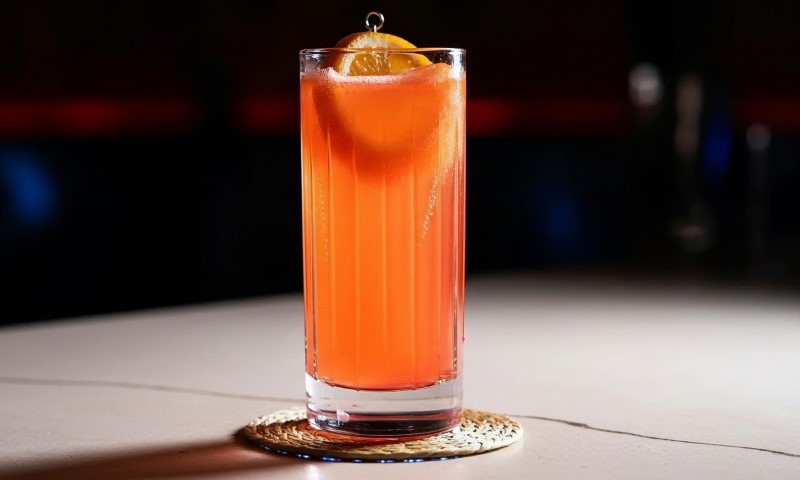
On paper, the Salmoncito reads like a challenge: three separate sources of bitterness stacked in one glass: Campari, tonic water, and grapefruit.
Yet instead of fighting each other, they lock into a seamless rhythm. To see why, it helps to look at the drink from both a flavor chemistry and craft perspective.
1. Three Bitters, Three Timelines
Each bitter ingredient has a distinct attack, peak, and fade , which prevents the palate from getting overwhelmed.
- Campari : Built on bitter orange, gentian, and rhubarb, its sweetness and citrus oils soften the blow. It hits mid-palate and lingers just long enough.
- Tonic water : The quinine delivers a fast, crisp snap that fades quickly, leaving a dry finish.
- Grapefruit juice : Adds two types of bitterness, quick from naringin and delayed from limonin, along with aromatic top notes that stretch the flavor without dominating it.
Together, they create a staggered wave of bitterness: crisp at first, smooth in the middle, and drying at the end. That’s why the drink feels layered instead of aggressive.
2. Grapefruit Is the Translator
Grapefruit does more than add juice; it bridges gin’s botanical base and Campari’s herbal citrus core. Chemically speaking, the fruit’s terpenes overlap with gin’s juniper and citrus notes, while its esters harmonize with Campari’s orange-based bitterness.
A small dose, no more than a third of an ounce , is enough to tie everything together. The twist and wedge garnish carry volatile aromatic oils that define the drink’s scent before the first sip.
3. Tonic Softens and Lifts
Without tonic, the Salmoncito would be an aggressive little aperitivo. With it, carbonation and light sweetness spread out the flavors, turning the bitterness into a refreshing highball rather than a slow sipper.
That balance also explains why the drink converts people who claim they “don’t like Campari.” The bubbles and chill give it the ease of a spritz but without the sugar weight.
4. The Mexico City Palate Shift
Historically, Mexican cocktails leaned toward agave, acidity, and spice. Tequila and mezcal were the foundations, not gin and bitters. The Salmoncito marked a subtle cultural pivot: a drink that embraced European bitterness while keeping Mexican brightness and hospitality.
Bartenders and guests alike found it approachable. It became the go-to drink after a shift, a palate refresher before dinner, and a statement that Mexico’s bar scene had joined the global conversation without losing its own style.
Perfecting It at Home
If you want to make a Salmoncito properly, technique matters more than fancy tools. Here’s how to hit that sweet spot of fizz, color, and balance.
1. Glass and Ice
- Use a chilled highball or copa glass – the tall, round shape shows off the color and maintains carbonation.
- Use clear, solid ice cubes that reach close to the rim. Cloudy ice melts faster and dulls the sparkle.
2. Build vs. Shake
Most bartenders build in the glass . But if you prefer a slightly more integrated texture, you can short-shake the gin, Campari, and grapefruit juice for five seconds before straining onto fresh ice.
The key is restraint: too much shaking kills carbonation later.
3. Tonic Choice
Different brands carry different sugar levels and quinine strengths.
| Tonic Style | Effect on Flavor |
|---|---|
| Classic dry tonic (e.g., Fever-Tree Mediterranean) | Highlights Campari’s bitterness and gin’s dryness |
| Fuller, sweeter tonic | Rounds off edges and gives a softer, fruitier feel |
| Craft tonics with herbs | Add complexity but can muddy the profile if overdone |
Start with 3½ oz tonic, taste, and stretch to 4½–5 oz if you prefer it longer or lower in strength.
4. Garnish Technique
Express the grapefruit twist over the glass to release oils, then discard it — leaving it in adds unwanted pith bitterness.
Add a small wedge of supremed grapefruit , meaning it’s peeled clean of pith and membrane, for aroma and presentation.
What You’ll Taste
A great Salmoncito unfolds in stages.
| Stage | Sensory Impression |
|---|---|
| First sip | Grapefruit oil, effervescent brightness, and gin’s botanical spark |
| Mid-palate | Campari’s sweet-bitter warmth moves in |
| Finish | Clean quinine dryness that resets the palate |
| Aftertaste | Lingering citrus and gentle herbal lift |
The rhythm of bitterness is what makes the drink addictive. Each component peaks at a different time, giving a smooth flow rather than a hit of harshness.
Resolving Common Issues
| Problem | Likely Cause | Quick Fix |
|---|---|---|
| Too bitter | Excess Campari or overly dry tonic | Reduce Campari to 0.2 oz, or switch to a slightly sweeter tonic |
| Too sweet / flat | Tonic with low carbonation or high sugar | Use fresh, small-format bottles and keep everything ice-cold |
| Washed-out color | White grapefruit or too little juice | Use pink or ruby grapefruit and add a thin slice for color |
| Harsh pith note | Over-expressed peel or unpeeled wedge | Supremed wedge only; discard expressed peel |
| No aroma | Skipped twist | Never skip the twist — most of the drink’s top notes live there |
Smart Variations That Keep the Spirit
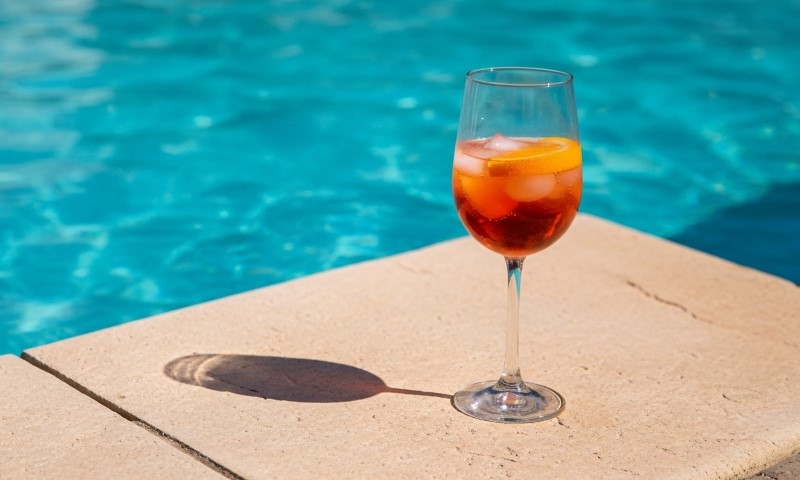
Experimenting is fine, as long as you respect the balance that makes the original work.
Softer Bitters
Swap Campari for Aperol at the same measure. You’ll get a more orange-forward, slightly sweeter drink that leans closer to a spritz.
Herbal Gin Swap
Use a citrus-heavy gin (like Tanqueray No. Ten or Malfy) for roundness. A juniper-dominant gin makes it leaner and drier, closer to a G&T in profile.
High-Bitter Aperitivo
Keep Campari at a full ⅓ oz , pair it with a crisp, low-sugar tonic, and serve it before dinner. The finish stretches longer and feels more “aperitivo hour” than patio drink.
Zero-Proof Version
Nonalcoholic gin and a gentian-free tonic will give a recognizable template, though lighter in structure. The grapefruit and bubbles still carry the drink’s essence.
What to Serve It With
Bitterness pairs beautifully with salt, fat, and citrus . The Salmoncito thrives alongside foods that echo or counter its flavors.
Best Pairings
- Salty snacks – roasted almonds, aged cheeses, or jamón serrano
- Ceviche and aguachile – citrus and chili bounce off the grapefruit and gin
- Lightly grilled dishes – seafood, chicken, or mesquite-touched vegetables
Bitterness naturally primes the appetite, something backed by research showing that bitter compounds can trigger digestive hormones and mild hunger responses. That makes the Salmoncito an ideal aperitif, particularly in warm weather.
A Mexico City Original
The Salmoncito was born in 2013 , behind the bar at Maison Artemisia , a bohemian absinthe-leaning cocktail den in Mexico City. Bartender Khristian de la Torre first mixed it as an offbeat riff on gin and tonic, tweaking the formula with Campari and grapefruit until the balance clicked.
The drink caught on fast; first with regulars, then with visiting bartenders, then across the country. For a while, de la Torre joked that the Salmoncito was paying most of the bar’s bills.
When he moved on, the drink followed him to other menus and even abroad. Within a few years, recipe sites and cocktail media had documented it in both English and Spanish.
By the late 2010s, the Salmoncito had become a kind of shorthand in Mexico’s bar scene: a symbol of modern local mixology that wasn’t built on mezcal or tequila. It represented a pivot toward lighter, aperitivo-style drinks that still fit perfectly with the city’s warm evenings and terrace culture.
The Salmoncito and Mexico’s Cocktail Evolution
For years, Mexico’s signature drinks revolved around agave and lime – Margaritas, Palomas, Carajillos . But around the early 2010s, a new generation of bartenders in Mexico City began exploring the European side of flavor: bitters, vermouths, and aperitivo culture .
The Salmoncito landed right in that moment. It blended old-world technique with new-world brightness, perfectly aligned with the city’s growing cosmopolitan vibe.
Maison Artemisia, where it was born, was one of several bars helping to rewrite the country’s cocktail story, not by rejecting agave, but by broadening the language of what a Mexican cocktail could be.
Today, the Salmoncito sits comfortably next to the Paloma as a drink that feels authentically Mexican, even though its bottles come from London and Milan. It speaks to a new kind of identity: local taste expressed through global ingredients.
FAQs
The Bartender’s Shortcut Recipe Card
For quick reference: the modern standard build you’ll find in most professional bars:
Ingredients
- 1½ oz London Dry Gin
- ¼ oz Campari
- ¼ oz fresh pink grapefruit juice
- 4 oz chilled tonic water
- Grapefruit twist (expressed and discarded)
- Small supremed wedge to garnish
Method
- Build directly in a chilled highball over solid ice.
- Add gin, Campari, and grapefruit juice.
- Top with tonic.
- Give one slow stir.
- Garnish and serve immediately.
Why Bartenders Still Talk About It
The Salmoncito’s secret is its simplicity. Four ingredients, no shaking, and no rare syrups or tinctures. Yet within that simplicity lies real finesse.
It also tells a story of Mexico City’s confidence as a cocktail capital . A decade ago, few would have predicted that a pink gin highball would stand beside mezcal and tequila in representing modern Mexican mixology. Today, it does.
Ask around the city’s top bars and you’ll find that most keep a version of it somewhere on the menu, sometimes under its original name, sometimes quietly rebranded, but always recognizable by that grapefruit-Campari glow.
The Bottom Line
The Salmoncito isn’t just pretty in the glass. It’s proof that bitterness, when handled right, can be refreshing, elegant, and deeply drinkable. It’s also a reminder that Mexico’s bar scene isn’t frozen in agave; it’s creative, open, and unafraid of experimenting with gin and bitters.
Learn the base build, buy a tonic you actually like, keep everything cold, and let grapefruit do the heavy lifting. Whether you’re on a rooftop in Condesa or standing in your kitchen at sunset, the Salmoncito delivers exactly what it promises: a small, perfect pink surprise that works far better than it should.






